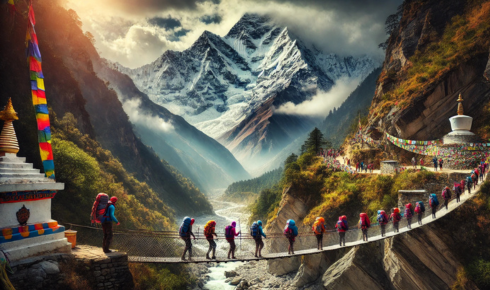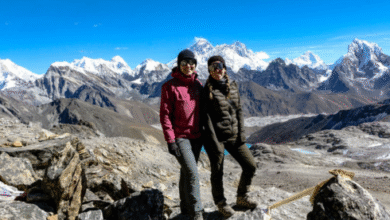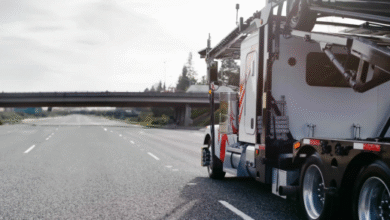Trekking to the Heart of Manaslu

The trek to Manaslu at its center trails the soul degree. Located in the Gorkha district of Nepal, the Manaslu Circuit is one of the prettiest, most varied, and most challenging treks in the Himalayas. Nestled beneath the mighty Manaslu massif, the Manaslu Circuit Trek takes you on a journey through nature, culture, and wilderness.
From the first time you start the trek, you’re thrust right into the shifting scenery. Beginning from the town of Arughat, the path slowly climbs through terraced fields, forests of rhododendron, pine, and oak, and traditional villages, where life is carried out at a much slower pace. As you continue, the trail becomes rougher and the villages smaller, the perfect remedy for Kathmandu’s frenetic streets. The trail tracks the Budi Gandaki River, and beautiful waterfalls, riverside campsites, and deep gorges progressively flaunt their beauty at each turn.
When compared to some of the more popular treks in Nepal, the Manaslu Circuit is isolated. This route is less popular than that of the Everest or Annapurna Circuits, allowing trekkers to experience the tranquillity of the Himalayas without being overrun by other trekkers. The winds howled and painted the prayer flags and my mind in motion upwards and towards and towards nowhere, just the silence broken by the winds, making a meditative effect and deep connection between you and the nature around you.
Heart of the Manaslu Trek: Mount Manaslu (8,163m) This is, for many, the ultimate highlight of the journey. As the trek proceeds uphill, the views of the mountain grow more dramatic, with the summit looming over everything. The high point of the trek is at the Larkya La Pass 5,160 meters where breathtaking views of some of the more beautiful mountains in the area, like Himlung Himal and Cheo Himal, are right at your feet. For those walking through with a willingness and desire to grow physically and spiritually, crossing this one pass is not just a trek but a base to greater heights.
In addition to its breathtaking natural beauty, the Manaslu region trekking experience is a study in culture. Trekking on that route introduces Indigenous communities of Tamang, Gurung, and Sherpa to us; each of their culture, language, and traditions differs from one another. The path passes by Buddhist monasteries, chortens, and prayer wheels in the villages along the way, where trekkers can stop and absorb some of the spiritual ambiance. Many of these communities have been living in the region for centuries and their lifestyle is relatively unaffected by the modern world. Engaging with the locals is a cultural experience with an insight into life influenced by the mountains and nature’s rhythms.
At higher altitudes, where weather can shift in an instant, the trek provides physical challenges as well. In fact, The Larkya La Pass is very difficult because the snow and stormy winds make the crossing risky. But with proper planning and attention to acclimatization, these hurdles become part of the experience, contributing to the sense of accomplishment upon finishing the trek.
Treks to the heart of Manaslu are journeys that provide much more than an escape into nature. It’s a journey of exploration — of mountains, of cultures, and of self. It’s a journey that takes physical strength and mental fortitude, but rewards with experiences and memories that last a lifetime. Whether it’s the majestic views of the Himalayas, the peacefulness of the high-altitude passes, or the friendliness of the local communities, the Manaslu Circuit presents a unique and life-changing experience for those brave enough to stray from the well-trodden path.
Here, however, we are at the actual Heart of the Manaslu trek.
The heart of Manaslu Trek Cost is the journey where you witness the heart of Nepal’s rugged beauty and cultural richness in the lap of the towering peaks of the Manaslu region. This trek gives adventurers a unique chance to discover one of the least-traveled, but just as breathtaking, corners of the Himalayas. Starting at the charming villages nestled at the base of the vast Manaslu, the trail meanders through lush valleys, dense forests, and alpine meadows to arrive at the high-altitude Larkya La Pass at 5,160 meters. What sets this trek apart is its mix of both natural beauty and cultural depth. As trekkers, many of whom fly into the country, make their way through remote villages, they are rewarded not just for their efforts with breathtaking mountain views, but also experience hospitality from ordinary people who continue traditions that have remained little changed for centuries. Set against the breathtaking backdrop of Nepal’s mountains, this trek provides a genuine opportunity for trekkers to reconnect with the natural world, with each other, and with the local communities, immersing themselves in Nepal’s magnificent scenery and its profound spiritual culture. The Heart of Manaslu Trek is sure to provide a journey that is profoundly enlightening, and memorable; be it seeking pleasure, spirituality, and/or escape from industrialized life.
Why Trek to Manaslu?
Trekking in Manaslu is like no other in Nepal. Those like the Annapurna and Everest Circuits routes have high-traveled notoriety, while Manaslu presents a chance to see a more remote and tranquil side of the Himalayas void of many of the masses found on other trails. This trek offers an exciting blend of stunning and challenging high-altitude scenery with an eye-opening cultural experience. The trek around Mount Manaslu, the world’s eighth-highest peak, provides stunning vistas of snow-coated peaks, glassy lakes, and unspoiled country. In addition to the breathtaking scenery, the trek passes through villages where life has remained largely unchanged for centuries. This trek provides a rare opportunity to explore some of Nepal’s indigenous cultures, particularly the Tamang, Gurung, and Sherpa people, whose villages you will pass along the trail. Throughout your journey, you will pass various local monasteries, chortens, and prayer flags, adding another aspect and sense of reflection to the experience. The Heart of Manaslu Trek is an ideal option for anyone seeking a more peaceful and less commercial trekking experience with a combination of natural beauty and cultural richness. It’s perfect for trekkers who are looking to physically push themselves, while also connecting with the environment and local cultures in a deep way.”
Manaslu region overview
Manaslu Circuit Trek Itinerary The Manaslu region, in the Gorkha District of Nepal, is a hidden gem that’s quickly becoming popular with adventurous travelers. This area remains wild due to Mount Manaslu, the eighth-highest mountain in the world at 8,163 meters. This diverse round circuit around Manaslu traverses through subtropical forests and terraced fields, up to alpine meadows and glacier-covered alpine passes. Various ethnic groups inhabit the region, such as the Tamang, Gurung, and Sherpa people, who preserve vibrant cultural traditions that have been handed down through generations. Apart from cultural importance and tradition, the Manaslu region is also a biodiversity hotspot with a number of wildlife including the snow leopard, Himalayan tahr, and red panda occurring in its protected areas. And since the trekking circuit falls entirely within the Manaslu Conservation Area, it’s also dedicated to protecting the environment — as well as the flora and fauna that make it unique. The trek showcases stunning views of the surrounding peaks including Himlung Himal and Cheo Himal, and is also a unique experience of rural Nepal at its most natural. This area is less developed than many other trekking regions in Nepal, meaning a certain sense of remoteness and peace that adds to the experience of trekking.
The Ideal Season for the Manaslu Trek
The most suitable season for doing the Manaslu Trek is during spring (March to May) and autumn (September to November) when the weather is stable with excellent trekking conditions. These months have the mildest temperatures and most stable conditions, with clear skies and excellent visibility of surrounding Himalayan peaks, including Mount Manaslu itself. In spring, the lower elevations are filled with blooming rhododendrons and other wildflowers, making the hike even more colorful and pleasant. The post-monsoon fall season brings chilly air and dry conditions and is the most popular time of year to trek in Nepal. The trail tends to be more accessible and safer from heavy snow or rain, which is less likely to occur in these months. Yet, it’s important to note that even in these seasons, trekkers need to be prepared for cold areas, especially at higher altitudes, where temperatures can fall sharply. It is best to avoid winter (December to February) for the Manaslu trek, as temperatures are freezing cold and there’s heavy snowfall, impacting the safety of the trail, especially at the Larkya La Pass. Likewise, the summer monsoon season (June to August) should be avoided as the trails can become muddy, slippery, and susceptible to landslides. The seasonal conditions form the best possible prospects for undertaking the Heart of Manaslu Trek as it allows the best trekking conditions in spring and autumn.
Route & Itinerary of Heart of Manaslu Trek
Manaslu Circuit Trek Map The duration of the Manaslu Trek ranges from about 14 to 18 days based on the walking speed of the trekker and acclimatization requirements. The trek actually starts with a ride from Kathmandu to Arughat. From this point, treks start to ascend through some small villages and dense forests towards higher altitudes. It winds along the Budi Gandaki River, through traditional villages, Soti Khola, Machha Khola, and Jagat, it is beautiful.
As trekkers journey further into the region, the landscape grows more rugged and remote. Trekking east to the village of Samagaon, trekkers usually spend a minimum rest day here acclimatizing and wandering the immediate area, including taking a side trip to the Manaslu Base Camp or to a monastery nearby. The trek includes the challenging Larkya La Pass, at 5,160 meters, the highest point on the route. The pass is physically challenging but will give you great views of many surrounding mountains.
The trek concludes here in Dharapani after the descent from Larkya La. A jeep ride back to Kathmandu from there ends this unforgettable adventure. This itinerary includes plenty of time to acclimatize and rest enough and is created to be sure that trekkers can safely traverse the elevation challenges but in addition, revel in the magnificence and tradition of the Manaslu area.
Important Permits and Documentation
Manaslu Base Camp Trek The Heart of Manaslu region is classified as a restricted area and requires some important permits to be issued to trekkers. The key permits include:
Manaslu Conservation Area Permit (MCAP): Needed to enter the Manaslu Conservation Area, a protected area that aims to preserve the natural beauty and biodiversity of the region. It’s available in Kathmandu or via a licensed trekking agency.
Annapurna Conservation Area Permit (ACAP) — although much of the trek is in the Manaslu Conservation Area, parts of the route cross into the Annapurna Conservation Area, requiring another permit.
Restricted Area Permit (RAP) Trekking in the Manaslu region is categorized as a restricted area and requires trekkers to obtain a special entrance permit. This permit may only be obtained through a licensed trekking agency and is typically issued for groups of two or more trekkers and a minimum trekking length.
All permits need to be organized before the trek via an official trekking agency. It requires filling in personal information, the dates of the trekkers, and other necessary documents. The permits are checked at each of the checkpoints along the route, and if you are not transporting the correct permits, you could be fined or turned around. Hence, it is important to make sure all the documentation is up to date before starting the trek to avoid any trouble.
TRAIL CONDITIONS: Navigating the Terrain
Trekking through the Manaslu Circuit is a progressively dynamic experience with diverse terrains offering their own challenges and rewards. The trek begins at lower elevations, where the trail weaves through terraced fields, dense forests , and picturesque villages. As trekkers head higher up, the terrain grows rugged and isolated. The trail frequently parallels the path of the Budi Gandaki River, including steep ascents and descents through rocky terrain and green valleys.
As you climb, the route becomes narrower and more physically challenging, with portions of the trail hugging steep cliffside edges, which can be somewhat hair-raising at times. As you rise higher, you’re more exposed to the elements, with snow-peaked mountains becoming a staple on the horizon. As you move to higher altitudes, the rugged surfaces and possible ice in the vicinity of the Larkya La Pass can render the trail physically challenging, which necessitates careful placement of the foot and caution.
Suspension bridges that span rushing rivers are another key feature on the trail, adding an extra dose of excitement to your journey. The ever-changing terrain — from alpine meadows to rocky scree slopes — keeps trekkers on their toes and ready for whatever the trail has to offer. But the rewards are equally impressive, with panoramic views of the surrounding peaks and valleys unfolding at every turn.
Cultural Immersion: Interacting with Local Communities
Manaslu Circuit Trek Customary Highlights One of the best components of the Manaslu Circuit Trek is the opportunity to interface with local communities en route. From the start, the trek passes small villages populated with local indigenous people, specifically Tamang, Gurung, and Sherpa communities, all of which have a very rich cultural history. These communities have called the region home for generations and still practice traditional lifestyles.
Traveling through these villages you will experience a cultural immersion like no other. Many of the villages still enjoy a spiritual connection to the land, and trekkers will encounter Buddhist monasteries, prayer flags, chortens, and stupas. Not only do these structures play a major role as cultural symbols, but they also provide an interesting and peaceful place for reflection and prayer.
Another highlight of the trek is the hospitality of the local people. Villagers love to share their stories, especially about their lives and traditions. You might be welcomed into homes for a hot cup of tea, or get to see local rituals and festivals firsthand, from daily prayers to major events. It is this combined experience plus the warmth of the people that make this trek not just a physical challenge but a cultural one.
Wildlife and Natural Beauty Along the Trek
Trekking up the Manaslu Circuit means passing through beautiful natural landscapes with diverse ecosystems and encountering different wildlife at different altitudes. In the lower reaches of the trek, you’ll pass through lush forests of rhododendron, oak, and pine; as you climb higher, alpine meadows and rocky terrain emerge. These differing vegetation types support an incredible diversity of wildlife.
As you hike through the conservation areas, you may spot such animals as the Himalayan tahr, a wild goat native to the region, or the elusive snow leopard, which prowls the higher altitudes. Red pandas, musk deer, and other species of pheasant also call the region home, making it a paradise for bird watchers. Bird watchers will be delighted to know that the region hosts approximately 400 species, from the Himalayan griffon vulture to golden eagles.
Manaslu Circuit Trek Weather The plant life along the trail is just as stunning. In the spring, the rhododendrons burst to life, splashing vibrant colors across the hillsides. Above that, herds of alpine flowers — including edelweiss — blanket the ground, adding to the trek’s charm. The landscape, which varies from dense forest and terraced farmland to alpine plateaus and snow-covered summits, offers trekkers a variety of visual spectacles, making the trek as much about the experience of the natural world as it is about the physical endeavor.
Traversing The Larkya Pass
Among the main attractions of this trek is the crossing of the Larkya La Pass, reaching a maximum altitude of 5,160 meters, one of the toughest on the Manaslu Circuit Trek. This is the highest point of the trek, a place of both the journey’s achievement and its greatest challenge. The trail to the pass is steep and rocky, and the last leg can be hazardous, particularly in the winter or early spring months when snow and ice are prevalent.
The Larkya La Pass is one of the most challenging parts of this trek, as it is at such a high altitude, so it is important to acclimatize properly. The thinner air at these elevations leaves something to be desired; at the highest altitude the oxygen levels are much lower, and trekkers often become tired and pant. The hike to the pass usually starts early in the morning to avoid potential afternoon storms. At these altitudes, the weather changes rapidly and snowstorms can be frequent, so trekkers should be prepared for severe conditions.
But once you reach the top of the pass, the rewards are remarkable. You will witness breathtaking views of the top peaks on this side, including Manaslu, Himlung Himal, and Cheo Himal. The physical and mental feat of crossing Larkya La, in addition, enhances the sense of accomplishment, and the unforgettable highlight of Larkya La stays with trekkers long after they’ve completed the journey.
Trekking Accommodation and Meals
Manaslu Circuit Trek Accommodation The accommodation along the Manaslu Circuit Trek is varying. At lower elevations, trekkers can look forward to simple yet cozy lodgings, with shared rooms, beds, and common areas. Rooms become basic at this elevation, and trekkers often share rooms. These teahouses at higher altitudes are small and heating options are limited, so it is a good idea to bring a sleeping bag as well as warm clothing to wear on colder nights.
The meals on the trek are often substantial enough to sustain trekkers on the long days of walking. Most teahouses have a menu of traditional Nepali food, including dal Bhat (lentil soup with rice), momos (dumplings), noodle soups, and various curries. In the lower areas, you may find a wider selection, including Western-style dishes, such as pancakes and pasta. As you ascend, there are fewer food options, but it’s all fairly simple, nutritious, and adequate for a trekking diet.
Keep in mind that food is one of the things that may get a bit pricier the higher you go and fresh (especially green) produce will also be less common. Some trekkers bring additional snacks (including energy bars, nuts, and dried fruits) to complement their meals. It does save time and energy though and the homestays/teahouses provide warmth and a chance to interact with fellow trekkers and locals.
Tips to prepare for a safe, enjoyable trek
Manaslu Circuit Trek Permit Preparation is the key to having a safe and enjoyable Manaslu Circuit Trek. Here are some practical tips to guide you:
Physical Readiness: This trek is physically demanding, with high altitudes and steep climbs, so make sure to prepare your body. Train for cardiovascular fitness and leg strength in the months leading up to the trek;
Acclimatization: Take extra time to acclimatize at higher altitudes to prevent altitude sickness. Set aside recuperation days at well-spaced points along the way, particularly around Samagaon and before crossing the Larkya La Pass.
Note: The first aid kit is one of the recommended equipment required for Everest Base Camp Trek. Trekking Packing List: Pack light but include the essentials. A warm sleeping bag, Layered clothing, trekking boots, rain gear, and a First aid kit are the basic essentials. Bring sunscreen and lip balm to keep the sun at altitude at bay.”
Consider trekking through the safety and cultural enrichment of walking with a licensed guide. They can guide you using local lingo, teach you about the culture, and help in emergencies.
Hydration and Nutrition: Water is critical, especially at elevations. Take a Canteen Water Filter and ensure to consume lots of Woof to enable you to gobble your way to the summit.
If you follow these tips and get prepared well, you will be able to complete the Manaslu Circuit Trek confidently and enjoy this wonderful journey to the maximum.




